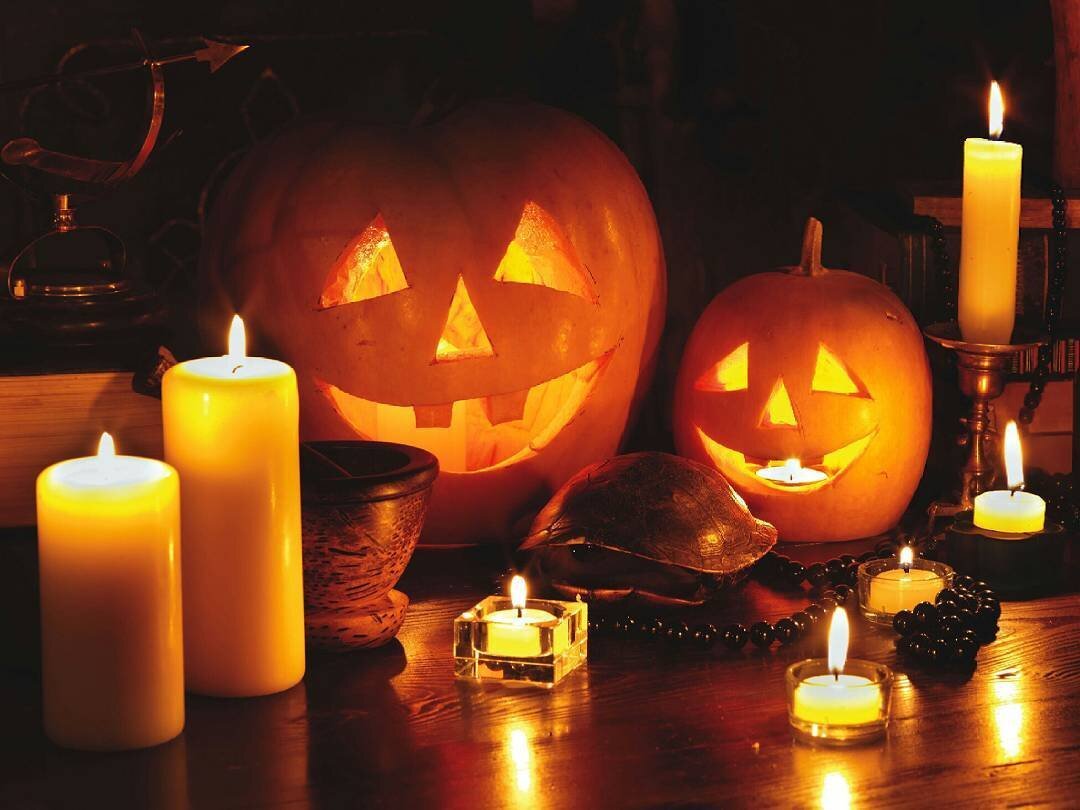Explaining Halloween to Your Kids
Halloween is not only a holiday where kids get to dress in costumes and go candy collecting, it is also a time of superstitious beliefs and customs of the past. Most parents are unaware of the true significance behind its origin. It is a good idea to educate ourselves and our children about Halloween's history and its traditions, so that we may understand how it all began and make informed choices.
The Origin of Halloween: A Celtic Tradition
The Celtics (ancient pagans) lived 2000 years ago in what is now known as Ireland, the United Kingdom, and northern France. On November 1st, the Celtics celebrated their new year because it represented the end of summer and their harvest, and the beginning of their hard, cold winter, which they associated with human death.
Hundreds of years ago, winter was a frightening and uncertain time because the food was low, the nights were long, and many people were afraid that they might encounter ghosts if they went outside during these long, dark days.
On the eve of October 31st, the Celts believed that the boundary between the living and the dead merged, and so they celebrated a festival called Samhain (pronounced sow-en). They believed that on Samhain, the ghosts of the dead returned to earth to cause trouble and damage crops.
Samhain was a pagan ritual that honored the souls of the dead (some of whom were evil) when they roamed the streets and villages at night. The Celts would set out gifts and treats outside to pacify the evil spirits and keep them from entering their homes.
This was a time of celebration, mystery, magic, and superstition, and the Celtic priests (druids) commemorated this ritual by making huge bonfires, wherein they sacrificed crops and animals.
People would dress up in animal heads and skins or wear masks so that the evil spirits would not recognize them and think they were fellow spirits when they went out at night.
It was a time when people would attempt to tell each other's fortunes, and young women were helped to identify their future husbands and whether they would be married by the next Samhain.
During this time, the Celts felt close to deceased relatives and friends and would set places at their dinner tables and leave treats outside their doorstep or along the road. and light candles along the way, hoping the good spirits would find their way back to the spirit world.
The intervention of the Church
By the 9th century, the influence of Christianity had spread into the Celtic lands of the British Isles, and the church attempted to replace the Celtic festival of the dead with a church-sanctioned holiday on the same day, known as the festival of 'All Saints.' All Saints Day was celebrated to acknowledge the saints of Christianity in much the same way that Samhain was attributed to the pagan gods.
The church would similarly celebrate this holiday by having big bonfires, having parades, and dressing up in costumes as saints, angels, and devils. All Saints Day was also called All-Hallows, and the eve before was called All-Hallows Eve and eventually, Halloween. Even with the church's intervention, the customs of Samhain survived anyway, and eventually became intertwined with the Christian holiday. These traditions were brought to the United States by immigrants from Ireland and Scotland.
What the Halloween Custom Represents
Trick-or-treating is derived from the time when peasants went house to house, begging for food for the upcoming feast, and families would give them pastries called 'soul cakes' in return for their promise to pray for their deceased relatives. The church encouraged this as a way to replace the pagan tradition of leaving food out for roaming spirits. This tradition was eventually taken up by children, who would visit homes in the neighborhood and be given food and money.
Bats, black cats, etc. were avoided due to the belief that they communicated with the spirits of the dead. Black cats were believed to bring bad luck and were actually witches in disguise, avoiding detection.
Bobbing for apples was a pagan technique used in foreseeing the future, and at Halloween parties, this type of game would be an indication of who would be the first to marry.
The Jack-O'-Lantern is based on a legend about a stingy, drunken man named Jack, who played a trick on the devil to avoid paying for his drink. Jack convinced the devil to turn himself into something else and would then place the devil near a cross, to prevent the devil from reverting to his devil form. Only once the devil promised not to take Jack's soul for many years, would he allow the devil to return to his original form. The devil was upset and promised to leave Jack alone.
According to legend, when Jack died, he turned away from heaven because he was a stingy, mean drunk, but Jack was desperate for a resting place, so he went to the devil. The devil, in keeping with his promise not to claim Jack's soul, turned him away from hell. The devil sent Jack off into the dark night with only a lit coal from the fire of hell. Jack placed this coal inside a turnip as a lamp to light his way as he roams the earth in search of a resting place.
Irish children used to carve out turnips and potatoes to light the night on Halloween, but when the Irish came to America in great numbers, they found that a pumpkin made an even better lantern, and this is how the American tradition came to be.
Also read: The Science of Halloween's Scariest Creatures
What Islam Says
"Say, never will we be struck except by what Allah has decreed for us; He is our protector." And upon Allah let the believers rely". (Quran Surah At-Tawbah 9:51)
Abdullah Ibn Masud (may Allah be pleased with him) reported that the Prophet (SAW) said,
“(Believing in) bad omen is (a form of) idolatry.” Ibn Mas`ud added,“It may occur to anyone of us, but God clears it away when we rely totally on Him.” (Al-Bukhari, At-Tirmidhi, and Abu Dawud)
Muawiyah ibn Hakam said to the Prophet (SAW),
“I have only recently abandoned ignorant beliefs, and now God has favored us with Islam. Some of our people visit fortune-tellers.” The Prophet said, “Do not visit them”. The man added, “And some of us associate bad omen with certain things”. The Prophet replied, “That is something which they find in their breasts. Let them not be deterred from their purpose ”. (Sahih Muslim).
Abu Hurairah quoted the Prophet as saying,
“Do not entertain bad omens. The best of it is the good one.” Asked which is the good one, the Prophet answered, “A good word any of you may hear.” (Al-Bukhari and Ahmad).
Halloween is a festival between autumn and winter, plenty and scarcity, life, and a celebration of superstitions from the past. It has now evolved into a secular, community-based event, catered to children. Americans spend an estimated $6 billion annually on Halloween, making it one of the country's largest holidays.
As parents, we should educate our children about these celebrations, and allow them to see that they are not merely harmless celebrations of candy and dress-up. We need to decide if these traditions conflict with our values and beliefs in Islam, by being informed and discussing this knowledge with our families in a loving and gentle manner.
If you are looking for an alternative, then be sure to check out the masjid in your area, as some have events on this night for kids to enjoy in place of celebrating Halloween. May Allah grant us good in this world and good in the hereafter and guide us and our children to the straight path, ameen.
Sources: Halloween History and Halloween in Islam
Salam, I’m Zakeeya!
I believe being a wife, a mother, and making our homes a sanctuary for our families brings us tremendous blessings, fulfillment, and improves society. Since 2011, I've been committed to helping Muslimas find tranquility in their roles, take better care of themselves, and attain contentment within. Our journey is not an easy one, but I pray the resources and mentoring I offer will assist in navigating you through your everyday challenges with mindfulness and gratitude, inshallah. Join me as I share wifehood, motherhood, homemaking, and lifestyle solutions that make life more fulfilling for you as a woman! READ MORE

